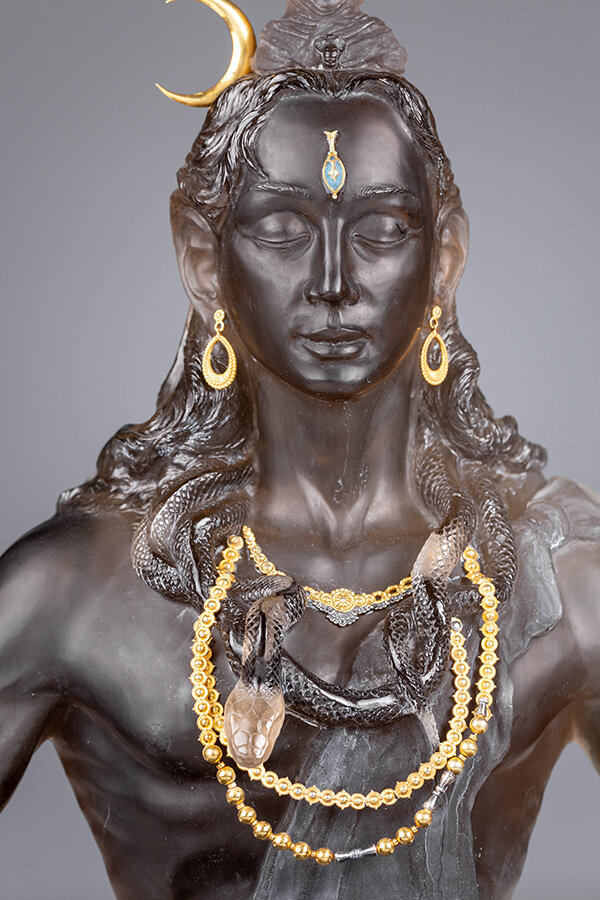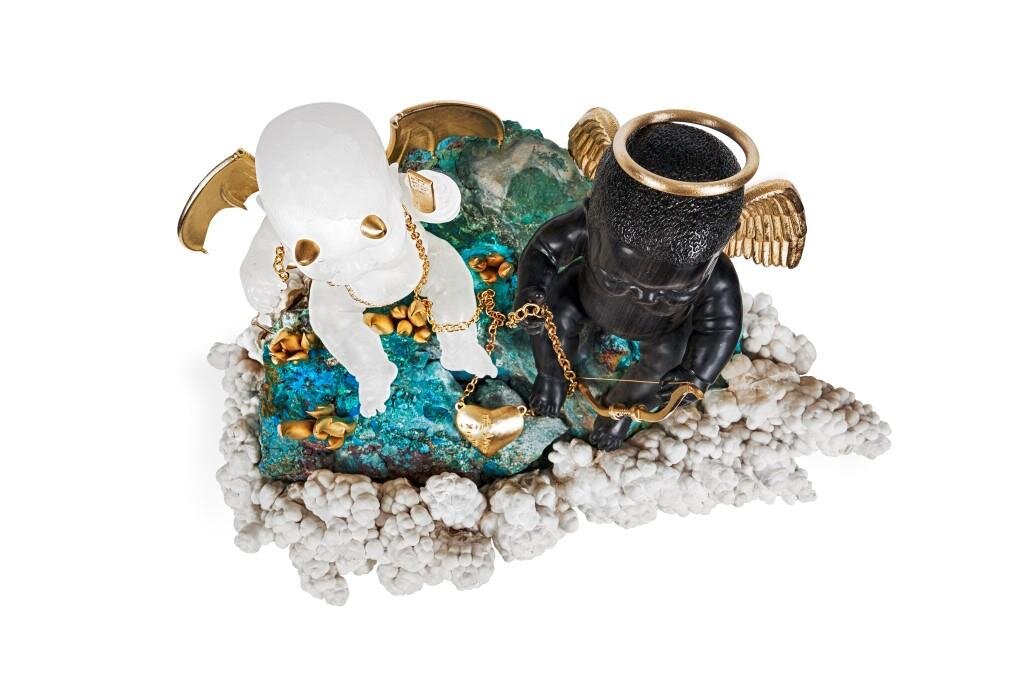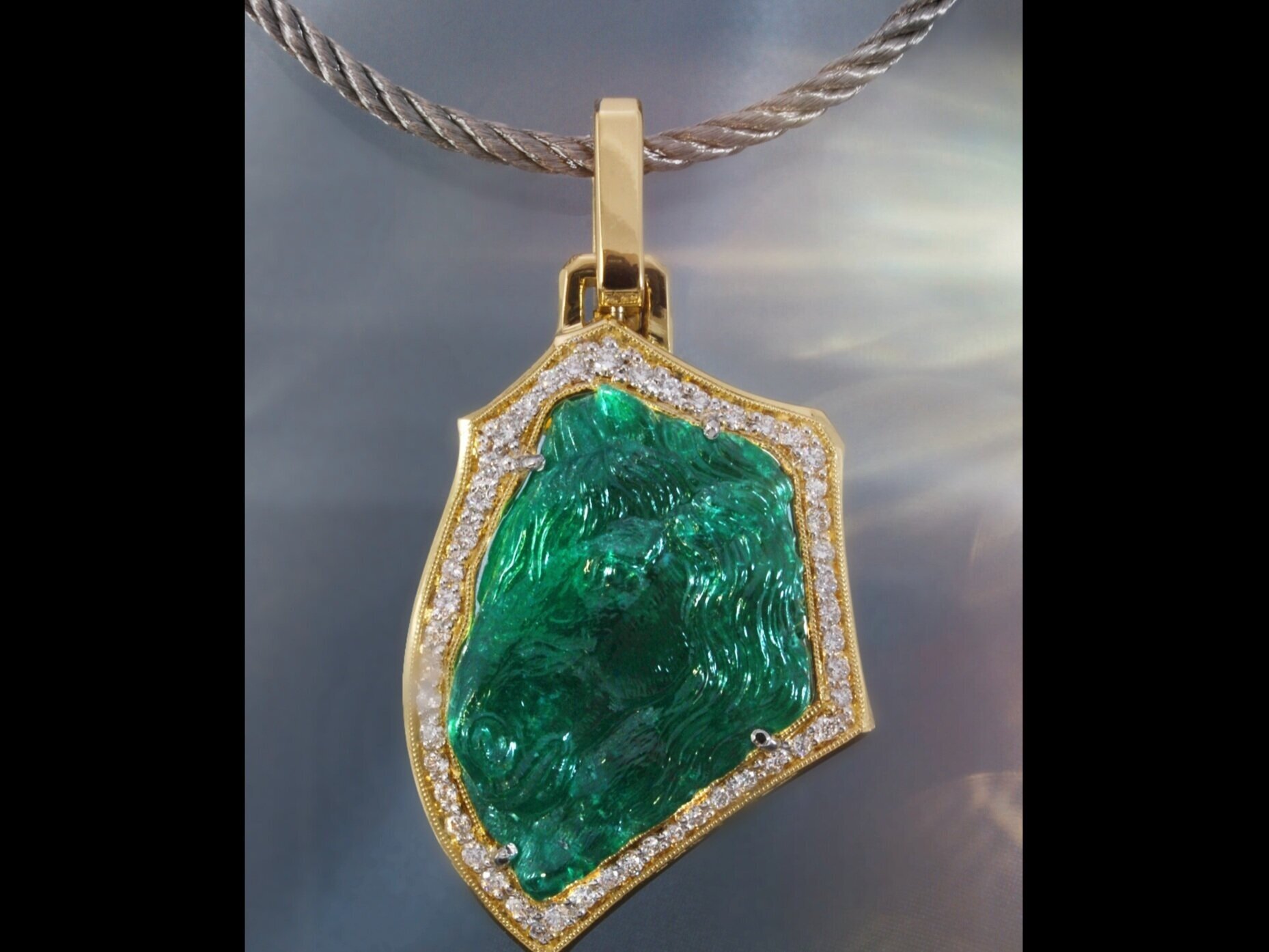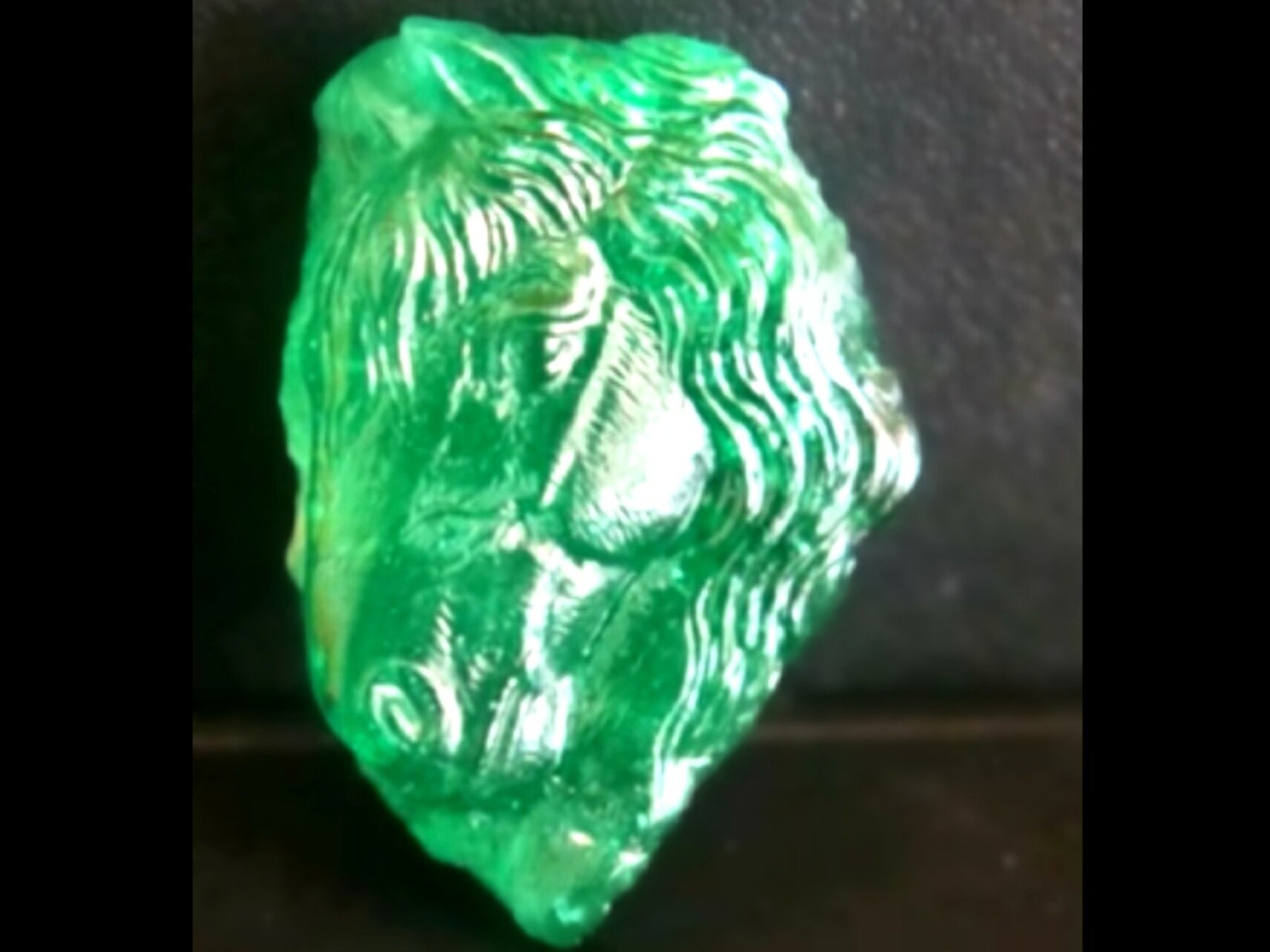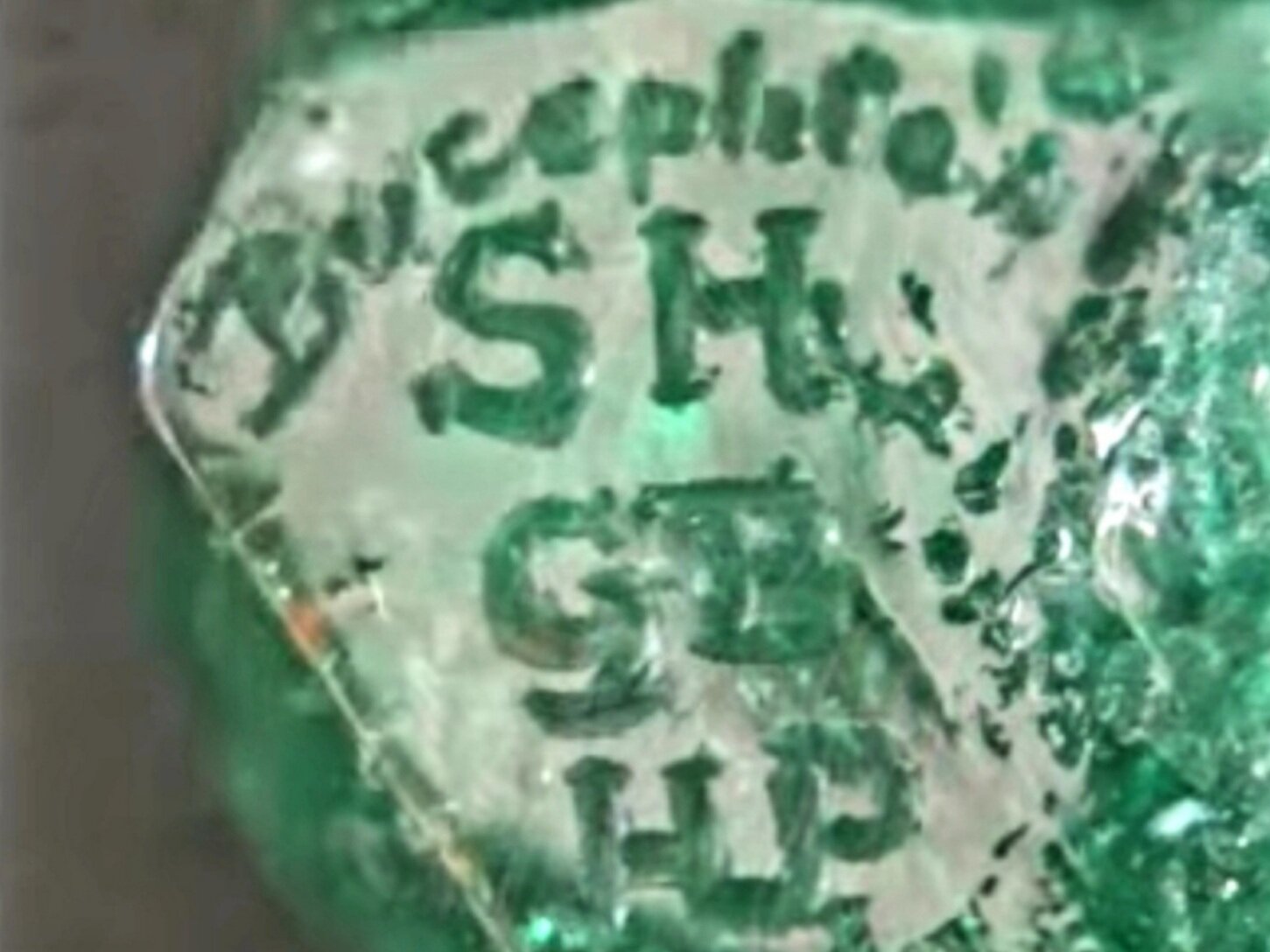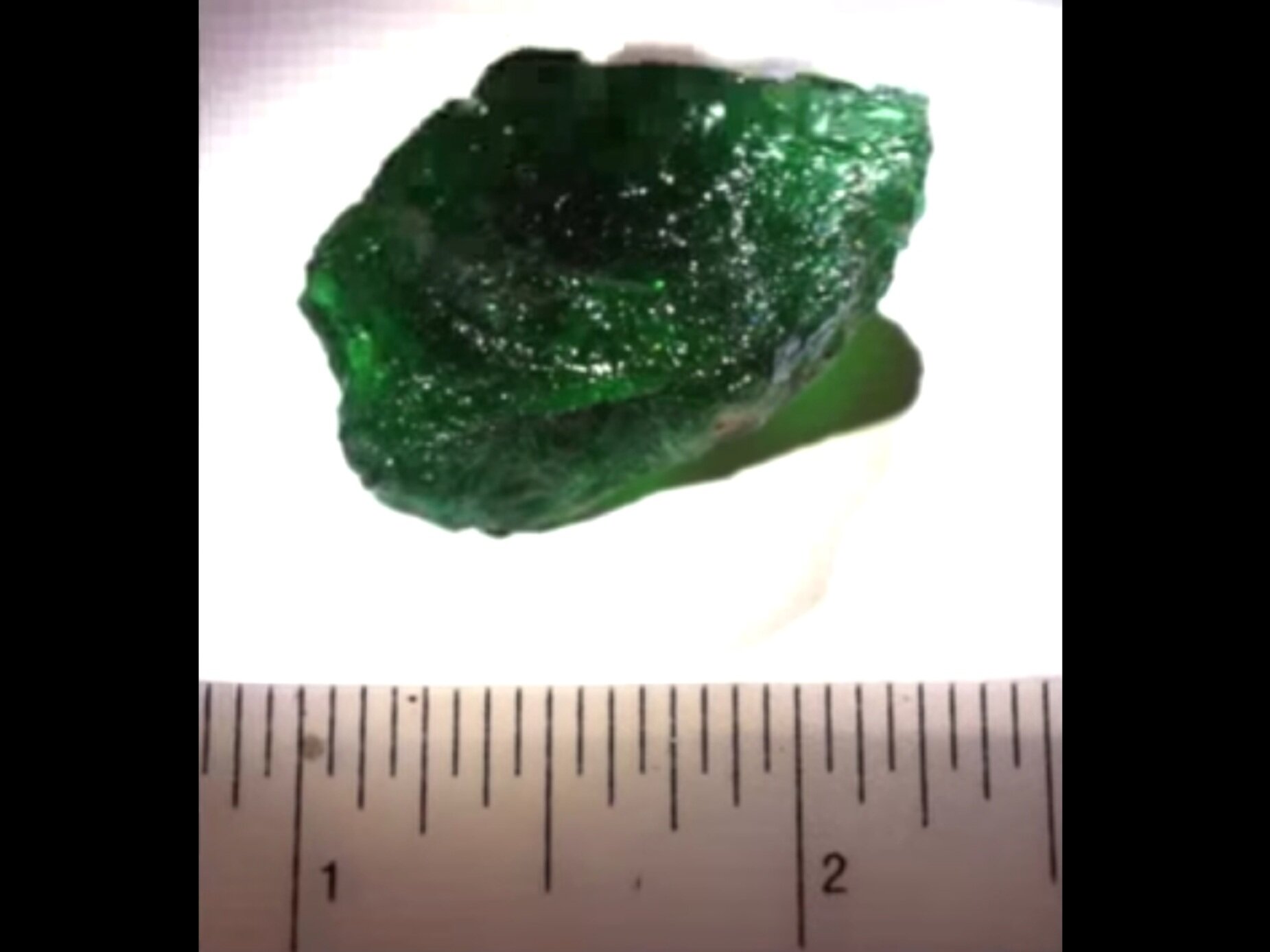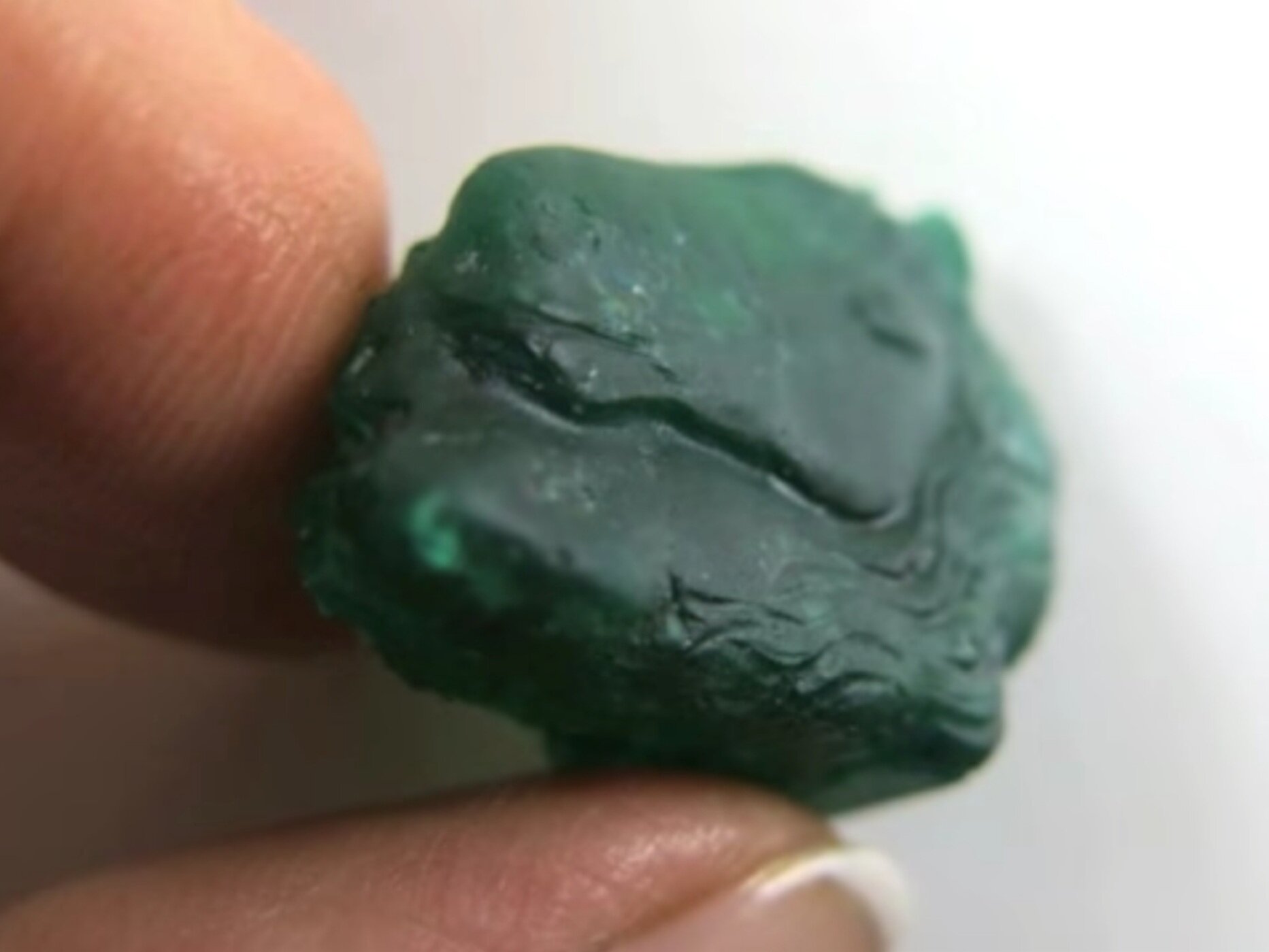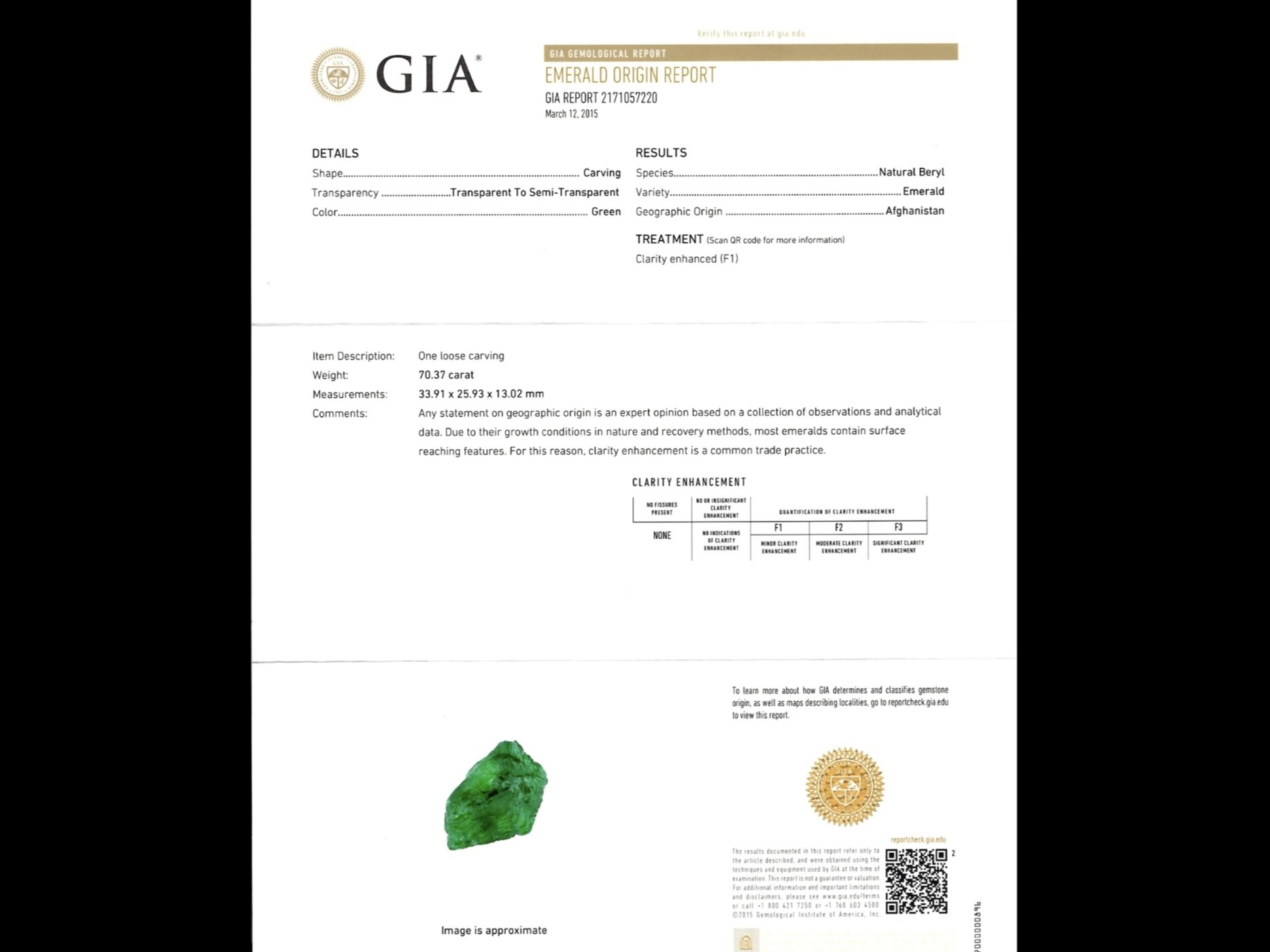 Image 1 of 3
Image 1 of 3

 Image 2 of 3
Image 2 of 3

 Image 3 of 3
Image 3 of 3




Ozimandia - Quartz sculpture
St. Petersburg, 2021
From the collection of the Maximilian Art Foundation
Master: G. Pylin
Rhinestone; thread
Height: 28 cm
On an elongated single crystal of a transparent stone there is a high-relief image of a man's head with a matte face and attributes of the supreme ruler of Egypt: a striped claft headdress crowned with a voluminous uraeus serpent and a false cylindrical beard with transverse stripes.
The surface around the face is covered with conditional faceted rock fragments, a fragment of vegetation on the side and a vertical layering of planes with a wood texture in the upper part.
The work, which is complex in design and execution, organically combines the natural, timeless nature of the stone (about 4 kg) and a man-made image that seems to have arisen from eternity.
The author considers the sonnet of the same name by the English poet P. Shelley (1817, translated by K. Balmont) as a creative incentive for the creation of the work:
I met a traveler; he came from distant countries
And he said to me: far away, where eternity guards
Desert silence, among the deep sands
A fragment of a broken statue lies.
From the half-erased features, an arrogant flame shines through,
The desire to force the whole world to serve itself;
An experienced sculptor invested in a soulless stone
Those passions that could survive centuries.
And the fragment of the statue kept the words:
“I am Ozymandias, I am the mighty king of kings!
Look at my great deeds
Masters of all times, all countries and all seas!”
There is nothing around... Deep silence...
The desert is dead... And the skies above it...
• Ozymandias is the ancient Greek name of the Pharaoh of Ancient Egypt Ramses II (1279‒1213 BC).
St. Petersburg, 2021
From the collection of the Maximilian Art Foundation
Master: G. Pylin
Rhinestone; thread
Height: 28 cm
On an elongated single crystal of a transparent stone there is a high-relief image of a man's head with a matte face and attributes of the supreme ruler of Egypt: a striped claft headdress crowned with a voluminous uraeus serpent and a false cylindrical beard with transverse stripes.
The surface around the face is covered with conditional faceted rock fragments, a fragment of vegetation on the side and a vertical layering of planes with a wood texture in the upper part.
The work, which is complex in design and execution, organically combines the natural, timeless nature of the stone (about 4 kg) and a man-made image that seems to have arisen from eternity.
The author considers the sonnet of the same name by the English poet P. Shelley (1817, translated by K. Balmont) as a creative incentive for the creation of the work:
I met a traveler; he came from distant countries
And he said to me: far away, where eternity guards
Desert silence, among the deep sands
A fragment of a broken statue lies.
From the half-erased features, an arrogant flame shines through,
The desire to force the whole world to serve itself;
An experienced sculptor invested in a soulless stone
Those passions that could survive centuries.
And the fragment of the statue kept the words:
“I am Ozymandias, I am the mighty king of kings!
Look at my great deeds
Masters of all times, all countries and all seas!”
There is nothing around... Deep silence...
The desert is dead... And the skies above it...
• Ozymandias is the ancient Greek name of the Pharaoh of Ancient Egypt Ramses II (1279‒1213 BC).
